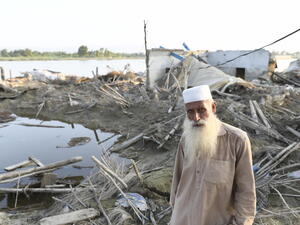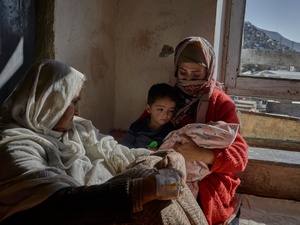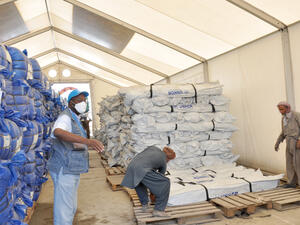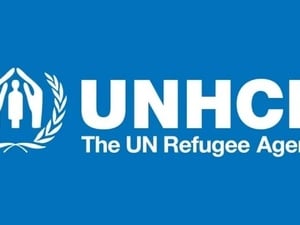More than 400,000 Afghan refugees have returned
More than 400,000 Afghan refugees have returned

Some 370,000 Afghans have returned from Pakistan, many through the Takhta Baig centre.
KABUL, Afghanistan, April 30 (UNHCR) - Over 400,000 Afghan refugees have returned home just two months after the start of assisted repatriations, while more internally displaced persons (IDPs) are heading home from the capital Kabul this week.
Repatriation from Pakistan has topped 370,000 since March 1, when the programme began. Returns from Iran hit a daily high of 2,475 on Monday, bringing the total number from Iran to 23,000 since April 9, when a similar scheme was started there. The rest of the returnees came from Tajikistan.
Returnees from Pakistan receive $20 each, or $100 per family, when they arrive in Afghanistan. In their home provinces, they also receive a UNHCR package containing plastic sheeting, mats, blankets, stove, lamp, kitchen set and hygienic kit and 150 kilogrammes of wheat.
Afghans going home from Iran are transported by the Iran authorities to the Afghan border and from there by the International Organization for Migration (IOM) up to their home provinces in Afghanistan. There, each returnee receives a $10 travel grant and a similar relief package that returnees from Pakistan get.
Most of the arrivals are heading for Kabul and Nangarhar provinces. Because of continuing insecurity and lack of absorption capacity, UNHCR is simply facilitating returns. The returns are voluntary.
Later this week, a second crossing point is scheduled to open from Dogharoun in Iran to Zaranj in Afghanistan's Nimroz province. There are already three crossing points functioning for refugees returning from Pakistan.
Within Afghanistan, UNHCR's assisted repatriation for IDPs is also gaining momentum. On Tuesday, a joint UNHCR-IOM operation began moving families from Kabul back to Bamiyan in the Hindu Kush mountains. A total of 260 families are expected to return this week. They will receive a winterisation package as the weather is still cold in Bamiyan, where several villages were reduced to ruins during the Taliban occupation.
This week's IDP returns follow the recent repatriation of more than 3,000 IDPs from Hesar Shahi camp back to their villages, mostly in Nangarhar province. This year, UNHCR has also helped more than 15,000 people return from the old Soviet compound in Kabul to the Shomali Plain, another area devastated by Taliban forces in the late 1990s. An additional 8,000 received assistance to return from the Panjshir valley to Shomali. So far, more than 30,000 displaced Afghans have gone home with UNHCR help since last December.
In all, UNHCR hopes to help 1.25 million Afghans - including 400,000 each from Pakistan and Iran, and another 400,000 IDPs - return home this year.









